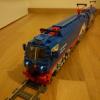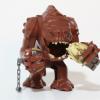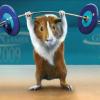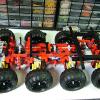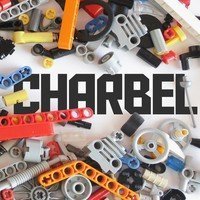Search the Community
Showing results for tags 'PF'.
Found 253 results
-
HZ 2041 (in fact HŽ 2041, as "Hrvatske željeznice", Croatian Railroads) or Djuran (Đuran) Train Engine as a nick name is diesel-electric engine dating from early 1960 from Croatian Đuro Đaković Factory and Franch Brissonneau et Lotz (registered in former YU as JŽ 642). According to data from www.zeljeznice.net, today there are 28 working engines in Croatia in two colors: red and blue. This is a model of red Djuran: ( http://www.bricksafe...an/DSC06438.JPG in high resolution) ...and this is a photo of the working (real) one captured in summer 2014 by Laurus (http://www.zeljeznice.net/forum/index.php?/topic/11180-hz-2041-jz-642-dhuran/page-13; photo published with permission of the author): Model is fully working powered by standard Lego 88002 motor and PF with working lights in the front and in the back of the engine. Djuran is mostly used as cargo train engine and for that reason (and for more fun for grandchildren, as well) this model is accompanied with five boxcars in the same color scheme. Hope you like it. Comments and suggestions appreciated Some more photos with one not very perfect video follow. (hi-res: http://www.bricksafe...an/DSC06437.JPG) (hi-res: http://www.bricksafe...an/DSC06433.JPG) (http://www.bricksafe...an/DSC06441.JPG) And the short video of cargo train:
-

[WIP] 18 Volt Drill Master LEGO conversion
Boxerlego posted a topic in LEGO Technic, Mindstorms, Model Team and Scale Modeling
18 Volt Drill Master LEGO conversion [WIP] BY Boxerlego Introduction Hi, This is my latest LEGO custom motor project but its not the only one I'm working on I just bought this 18v drill today for the intention of modifying it for LEGO use. My previous drill motor project I only modify an old 18V drill motor to fit with LEGO but this time around I've a new 18V drill motor with a fresh 18 volt battery pack and I'm going to try to fit with LEGO. The nice thing about this is I got that power drill with an 18v battery pack along with charger for a great deal of $16, the original sale price was $35. My first 18v drill motor project had tons of problems to over come and for a long time at first the motor was not even able to be power with LEGO 9V PF system. This was a major problem for me and ultimately I didn't quite know enough on how to drive a DC motors with electronics. So I moved on to my next motor project which was a stepper motor and was more efficient that it could be driven with the LEGO V1 PF system. This was a good step up but it wasn't quite as powerful as the drill motor can be. It didn't take long for me to figure out how to drive a motor with electronics, there are lots of good YouTube videos out there that got me started but ultimately how to properly drive this 18v drill motor with LEGO was still far from perfect. My first motor driver had several mistakes however LEGO was able to still make it work but still those problems needed to be understood and corrected so I can make improvements and make it work better. I will spare all the details here and I will just say that in 2014 I learned tons about how to properly drive motors and more efficiently. Which brings me to my other motor project the upgraded XL motor I'm working on, which is reaching the final stages and that is building the motor driver. This motor driver here for the XL motor MOD is absolutely the best one I made yet. You wont believe what I was able to with this motor driver or maybe you will . I will just say that this motor driver here I made works from the regular 7-9 volts the LEGO Battery box can supply but however the XL motor mod has a switching DC power supply that can step up the 7-9 volts from the battery box to 12 volts for this XL motor mod to work off of. Overall this topic will mainly be about the 18v drill motor LEGO conversion so to start it off I want to show a video time line of some my previous projects with my first drill motor. Video Time Line Think this is either going to work or not please feel free to comment on the matter. I hope everything works out well- 11 replies
-

LEGO fighting robots that play soccer
PKW posted a topic in LEGO Technic, Mindstorms, Model Team and Scale Modeling
Hi to all! waiting to the sun to film the RC Dawnbreaker I've edited and posted an old video that I've made to test my battle bots: crab and scorpion. During the video me and my cousin were talking in italian but don't worry: i've added some subtitles just to translate our wisecracks ;) Some stats about the robots: GRANCHIO (crab) weight: 900g weapons: claws motors: 2 XL(wheels) 2L(claws) strengths: 4x4, can keep the ball weaknesses: (hardly) flippable SCORPIONE(scorpion) weight: 900g weapons: flipping arm motors: 2 M (wheels) 1 L (reloading winch) 1 old 9V (gearbox) strenghts: atomic-like powerful weapon, defensive/offensive weapon weaknesses: hard to control (really), low traction enjoy the video (likes and comments are welcome if you like it ;) ) -

RC MajklSpajkl's Dawnbreaker by PKW
PKW posted a topic in LEGO Technic, Mindstorms, Model Team and Scale Modeling
Hi to all! Proud to present you my latest MOC… ops, sorry, my latest MOD! First I have to thank MajklSpajkl that made an awesome MOC, but he has also made my work possible, so I decided to put some link to his creation: original topic, (where you can find instructions)second here is my MOD: important pieces I've add: -lipo BB (same size of the AAA one) -M motor -L motor -receiver -16M axle (EDIT ) -yellow shocks -U-joint I built this in more or less 30 minutes but it is a really funny creation! is has also a particular return-to-center steering based on an old force: GRAVITY! how it works it is simple (hope I can explain it as simple as it is ahaha): the car has an high caster angle, this angle auto-center the wheels while running forward, I've put the M motor directly linked to the steering 5,5 axle and it works well! in fact when the motor move the steering it forces the mechanism so when you release the command this elastic force make the motor turning back more or less at the center, it is not important that it is perfectly centered, because the high play of the steering make the caster angle center it with more accuracy :3 here are some photos (it has different colors because i've not built it from the two original set) -

[WIP] 1:50 NASA Crawler Transporter
OzShan posted a topic in LEGO Technic, Mindstorms, Model Team and Scale Modeling
I am getting close to the end of this long term build and it's time to share some pictures and a bit of the story. Even before I had finished putting together 10231, I decided I wanted a Crawler to go with it. Being a Technic fan it had to at least drive around and lift the launch platform and shuttle. Those two basic goals spawned a project that has lasted a little over 2 years so far. Some ideas have stuck around since their inception, others were a bit optimistic (like building a peristaltic pump and hoping I could find a way to control the pneumatics hydraulically). February this year marked the 50th anniversary of when the two crawlers went into service, so recently there has been extra motivation to finish. The base equipment; - 16x M-motors (drive) - 4x L-motors (pneumatic jacking and leveling) - 4x IR Receivers (V1 as the V2s do not like driving multiple m-motors on a single channel) - 4x NXT servo motors (steering) - 4x RCX rotation sensors (measuring jacking level between truck and chassis) - 2x NXT bricks (one master and one slave. The master communicates with the Android Tablet and coordinates itself with the slave. Programmed in LeJOS) - 1x PF IR-Link sensor (link between master NXT and all PF motors) - 2x PF Battery boxes (with thermal overload removed) - 1x Android Tablet Future add-ons - Accelerometer (automatically detect the crawler is on a gradient and adjust the leveling to suit) Bricksafe folder is here: http://www.bricksafe.com/pages/OzShan/Crawler Firstly, a couple of my favorite reference pictures; The build itself started with the trucks, thinking that the pneumatics and LAs would dictate the scale. First proof of concept - build a coupling to give height, pitch, roll and yaw to the truck. The pneumatics need to be on their own gimbals too. The reinforced 2x2 rounds slide and rotate in the 4x4 macaroni's. It is on the limit of what will hold together without glue, but it does hold. The two 1x2 technic bricks at the base of the 2x2 column are helped a little by a string (not pictured) which runs up through the 2x2 rounds with the axle. Initial prototype of the drivetrain. I would have liked a higher ratio but there was just no room at this scale. When the gearbox was married with the truck chassis I had to juggle positions, so you will see in later pics the crown gears are facing in not out Best laid plans.... Marry studded and studless they said. It will be easy they said... Showing what will eventually be the steering between chassis and truck. The guide tube and pneumatic cylinders are all on gimbals with the pneumatics coupled together. The average height is preserved during any tilting. With prototypes sorted, it's time to bricklink some parts and quieten down the colour scheme! (thank you 42030 for providing 5L thin liftarms with axle hole in LBG color) You can see the relationship between "guide tube" and cylinders here. The pneumatic system was overhauled too many times to remember but this is what it arrived at. It is all controlled by the direction of the motor. Running forwards drives the pump. When running backwards, the lobes operate the pneumatic valves in series, letting small amounts of air escape each rotation. This lowers the chassis in a slow and controlled manner. The motor can be turned on or off and run in either direction at any time due to the valve timing. Early attempts with PF Servo and NXT servo just couldn't park the valve reliably and after a few operations I would hear a slow leak. I have been trying to keep up with the LDD but it's hard to stay motivated when I know I'm just going to have to suck it up and move over to LDraw if I want to include all the motors, pneumatics and LAs Works so far; (I'll make the files available if anybody would like them). I found LDD essential in the early days to plan ahead and simply find parts, but later on the build overtook it. Original 'box' pump. 1x PF XL motor, 4x 6L pumps running at 90 deg to each other. Very smooth but bulky. Flatter attempt in the same vein. The truck itself. The final design for the height control modules. I hope you enjoy the build so far. More pictures to come of chassis, steering, leveling and interior details. I'll leave it to others to decide what 'theme' it belongs to .- 73 replies
-
- Power functions
- NXT
-
(and 5 more)
Tagged with:
-
Shortly after jtlan's CNJ1000, I set out to make a small PF boxcab of my own! I think like many of the earliest diesel electric locomotives in the US, the A6 had its beginnings in the Kaufman Act of the 1920s, which banned steam locomotives from operating in New York City. PRR built three A6 class two-axled switchers (3905-3907), one of which was repowered and reclassified A6B (3907), all of which operated in various New York yards between the late 1920s and late 1950s. Here is a picture of the lone A6B with some B1s up for scrap in 1961: This projext actually started out as one of those B1s, but along the way we found engineering drawings for the A6/B, and I was able to cram the drivetrain I'd designed for the B1 into the smaller body of the A6B. The unit is 24 studs long between couplers and has about 400 parts. The power comes from an AAA battery pack driving the old 9v geared motor. Not surprisingly the most difficult part of this model was figuring out how to position the battery pack, the geared motor, and that darn PF receiver inside the scaled dimensions of the loco. There weren't *that* many potential combinations of fit, but I had to go through a couple. In the end it's actually pretty tight given that the face of the receiver is already at the same height as the top of the curved slopes that make up the sides of the roof. The transmission is as simple as I could possibly make it: just 8-tooth gears meshed into 24-tooth crowns. You could actually speed this up by using 12 and 20 tooth bevels, but I prefer to go slower and have more pulling power - I want to be able to use the most worn out AAAs floating around and still go somewhere. Consequently the loco is *really* slow, but I'll call that a feature. Otherwise, the build is pretty straightforward, but I did try to make the top easily removable. My only real beef with this implementation is that the L drivers are slightly too big and the 1x1 tanks slightly too small. The receiption is also not amazing due to the positioning of the receiver, but it could be worse. There's a flap in the roof to access the power button. I have no idea what the big tank in the back is for. Someone enlighten me. More pics Bonus material #1: I tried my hand at "weathering" the unit by changing some of the brick colors, but I couldn't really get a combination with which I was happy: Bonus material #2: LDD of the B1 that I didn't finish. Pantographs are a pain. EDIT: Instructions now available for sale on Rebrickable: https://rebrickable.com/mocs/MOC-76470/NonsenseWars/148-pennsylvania-railroad-a6b-v2-powered-up/#details
- 12 replies
-
- switcher
- interiors are overrated
- (and 7 more)
-
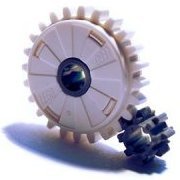
[MOC] Mercedes G-Class SWB
Teo LEGO Technic posted a topic in LEGO Technic, Mindstorms, Model Team and Scale Modeling
Hello everyone, Here's my newest MOC, a Mercedes G-Class. After months of hard work, and bugs and fixes, it's finally finished. It was built to incorporate all of the best elements of high-torque gearing with a compact bodywork. It features: -Drive - 2 x XL, geared 4.5 : 1 -Steering - 1 x Servo -Lights - 6 x LED with hidden switch -Suspension - pendular A video showing all features: Pictures: -
Hey everyone! I've finally decided to start my own thread, rather than piggy-back someone else's. Frankly, I need help with this: https://www.flickr.c...157643245649484 I'm trying my hand at remaking the classic 7760, with full PF components (lights too!) for a while now, but have hit a wall. The problem lies with the cab windows, and my current solution looks terrible in real bricks... So, I threw together an LDD moc up of what I currently have, and earnestly hope that you can provide me with something insightful! http://www.brickshel...ry.cgi?f=554681 Thanks in advance, ~M_slug357~
-

Lego working warning lights
Timtechnic12 posted a topic in LEGO Technic, Mindstorms, Model Team and Scale Modeling
Hello, I'm Tim. I'm new to EB. I had an idea to make working warning lights with only non rare lego bricks. So i came up with this idea: http://www.youtube.com/watch?v=0GAaL5OIw7M I hope you liked it, Tim- 11 replies
-
- warning lights
- technic
-
(and 4 more)
Tagged with:
-
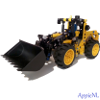
Little American Truck
Appie posted a topic in LEGO Technic, Mindstorms, Model Team and Scale Modeling
Here's another small creation I spend some time on the past few weeks. A small American truck: I had a few wishes before I made this model. - Had to be 7 studs wide. - Had to use these tires, because they are the only tire size I know of that have good looking "truck (double) wheels" for the rear axles and good looking single tires for the front wheels. - Small fake engine - Maximum steering range possible - Steering controlled from the 5th wheel (why will become obvious later) - Openable doors and interior I got this in the model, though some are not the most pretty. Especially the wheelarches at the front are a bit big. First of all, making the wheel arch a full stud lower would touch the wheels. Lowering it half a stud is something I didn't even really look into, because I am getting pretty tired of the "half stud issue" that plagues pretty much all my models The rear part of the wheelarch is that far behind the wheel due to the steering mechanism. There is space to move it 1 stud closer to the front wheel, but I wouldn't know how to fix it in place while still keeping room for the steering rack. Considering I have alot of "old Technic" parts I used some vintage steering solutions for this model combined with modern parts. On the other hand though I do kind of like this wheelarch, because it reminds me of the wheelarches of old cars I could have settled for a smaller steering angle, but I didn't want to. I also had to keep the steering solution low due to the fake L4 engine above it A known concept for a small engine that I crammed in here. The hood is open for 2 reasons: I like to see stuff moving and because the hood would otherwise be too high for the model. I tried to mimic a curved top on the hood by have it go from 2 to 3 studs. I did have a desire to make a openable hood, but I couldn't figure out a way to make that structurally sound. Openable doors and an interior. The chairs are actually linked to the red triangular half liftarms on the outside keeping them (and the chairs) at that angle. The belly shot, which also provides another look at the steering That 8T gear is actually connected to a 16T idler gear on the steering axle to transfer it to another 8T gear going to the L4 engine. The truck is only driven from the 2 left rear wheels, since I can't fit a diff in this scale I figured this was the next best thing to still keep a nice steering angle. As you can see the outer ring of the small turntable, the "5th wheel", is connected to a black bevel gear which controls the steering. The reason for the axle in the centre of the small turntable is for the trailer. The trailer is a loaded with liftarms, that's partially because I only had 2x 3x11 panels from my 42029 and because of the white line on the truck which I continued on the trailer. The white line on the truck was actually an afterthought. The truck was completely red before, but that looked rather dull imo so messing around with some lines I decided this pattern on the truck was a nice break from all the red. This isn't just a trailer. This is a trailer that gives the truck RC possibilties. This was another wish I had for the model. I wanted to build a truck that was a non PF model on its own, yet had the option of being remote controlled with a trailer. The small turntable was an obvious choice for me because with that the truck on its own looks like it has a pretty decent looking 5th wheel which also allows to be used as a control to steer the vehicle. It also allowed me to have 2 functions (drive and steer) crammed into one spot on the model. I didn't want to see universal joints at the rear of the trailer going to the truck for steering, because that has been done and I don't like the look of that, so it had to go through the 5th wheel. The black bevel gear at the front of the trailer is to secure the steering of the 8T gear. Of course the trailer turns as well, but since steering is done with a M motor you're basically "re-adjusting" steering every step of the turn. The length of the trailer is based on what "felt right". This meant that I had plenty of space in the trailer for all the stuff. I got pretty lazy and just used some universal joints to link the motors I also made a very small video of the model (battery of phone ran out ) I couldn't make a video of the model going in reverse. It does some gear grinding then. Something I can't seem to really fix, because Lego decided to make a square hole in the small turntable instead of a round one, which I could have used to secure that drive axle on the 2.5 stud high rear chassis some more. Considering I don't like driving it in reverse anyway (I am not a master of turning with a trailer ), I am just going to leave it.- 31 replies
-
- American Truck
- Small fake engine
-
(and 4 more)
Tagged with:
-

[MOC][MINI] 6x6x4 with live axles
PKW posted a topic in LEGO Technic, Mindstorms, Model Team and Scale Modeling
Just start this topic with a picture, it is full of hint about how I want To build my MOC (and I hope i success) What are them? :D -
Hey all, I'm finally getting around to sharing one of my latest MOCs, a Norfolk and Western GE U30B. The U30B is a four-axle second-gen diesel-electric locomotive produced between 1966 and 1975. 296 units were built for 12 railroads, of which 110 went to the N&W. With the U30B I wanted to make a "no compromises" Power Functions locomotive. I felt that my first three Pf implementations had gotten progressively better, but that they all still suffered from what I considered various compromises like not being able to change gear ratios or not being able to easily replace batteries. The no compromises loco would have to hit these checkboxes: good PF visibility easy to change batteries high structural integrity max traction/power for given form factor ability to use different PF motors/change them ability to use different gear ratios/change them Given these constraints, I chose the N&W U30B because it was one of the last modern diesels to have 1) a high short hood, which I really like, and 2) 4-axle trucks which are more easy to make with more structural integrity than 6-axle trucks. Those being said, U30Bs for other railroads were built with low short hoods, and the 6-axle U30C was twice as popular as the U30B. After a few months of on and off development and construction, this loco was completed in February, just in time for locomotive power testing! At my usual scale of 15" per stud, the 1100 part loco is 8-wide and a whopping 51-long from magnet face to magnet face - the longest I've ever made. The construction isn't really anything to write home about: like my HH1000, most of the model is studs up with large tiled plates forming the detail on the sides. The handrails are made of a third-party tubing, which isn't quite as good as flex, but orders of magnitude cheaper. There is one slightly clever bit where the roof has been raised by 1LU in order to not have a ridge between the "plate with bow" and the "roof tile" and said 1LU gap is filled with a bracket: But the real question is: how does it fair with regard to my original requirements? The PF receiver sits at the end of the loco with the dome exposed - I consider this generally the best case for PF; reception from the front isn't quite as good as it could be, but I'd rather have that than the top of the receiver sticking up further. As with my previous two PF diesels, I have used the big AA battery box in order to get the most amount of energy into the loco without going to a custom power source. This drives two L motors - the biggest motors you can fit in a 5-wide body - connected to a V2 receiver. The battery box is secured by two "crossaxle 3M with knobs". Pulling off the sides (which are connected with about 6 studs) and pulling out these pins allows the box to drop out the bottom. Similar to a Real modern diesel, most of the structural integrity is in the frame (blue), which is just a big mesh of big plates. Furthermore, the battery box is mounted to a set of technic beams (green) which rests on the gearboxes (yellow): the weight prevents the gearboxes (which are just studded together) from coming apart when a lot of torque is applied. But those L-motors are pinned into the gearboxes with a pattern (red) such that M motors would also work! And E motors! And I have left enough space and connection such that the old geared motor with the appropriate extra reduction could also be used (I think). Finally, the motors are oriented such that the drivetrain has an extra stage (green) where gears of different sizes can be used and the gear ratio changed. This screencap shows 3:1, but in practice I have been using 5:3 with the 20-tooth and 12-tooth bevels, which I find to be a better balance between speed and torque. EDIT: Instructions now available for sale on Rebrickable: https://rebrickable.com/mocs/MOC-84533/NonsenseWars/148-general-electric-u30b-v21-power-functions/#details
-

A midscale trial jeep
Appie posted a topic in LEGO Technic, Mindstorms, Model Team and Scale Modeling
Here's a creation I put together in a couple of evenings after Wall-E to enter in a trial contest at a LUG meeting: The contest had a few rules: - Use the 62.4 Lego tires (which do look a little small for the height on this model) - Make it 17-20 studs wide - Use 1 IR reciever - Use 1 or 2 motors for drive - 1 motor for steering Everything else was pretty much free game. It features quite a load of "stolen" ideas: - Zblj's little portal hubs (thanks for that nice idea, though I should brace them more since they can get seperated a little under force as I found out at the trial) - Snipe's limited slip diffs with rubber bands (though obviously more people used this idea, I am not sure who used it "first", I only know I saw Snipe's post first. Either way: thanks) - TLG's 9398 steering setup (which I only made a little smaller) While I know diffs aren't a good idea on trial trucks, I refused to have no diffs in my model. So I looked at other options, came across something called "torsen diffs" but I couldn't fit them in a 20 stud wide vehicle with portal hubs (21 is the best I got). Then I came across this idea for a sort of limited slip diff, which worked pretty well at the trial. You can also see the steering axle has some free play (and 2 bevel gears) so the steering would still work when the suspension is at an angle. On a rare occassion, under force the bevel gears would skip on the gear rack since on the other end are 2 universal joints, so bracing isn't the best at it could be. Also given the fact that due to the suspension the steering axle's range of motion isn't even fully utilized I could have probably braced it in the given space, but I didn't find out until the trial that this actually needed some better bracing Trying to keep the weight low and balanced I learned that a battery loaded AAA battery box is about equal in weight to a XL motor and servo motor. So having the 2 motors on one side and the battery box on the other seemed like a good idea.The XL motor ended up with a gear reduction of 1:7. Which means it certainly isn't the fastest, but it runs up a steep hill until it would simply fall on his back before gears would grind. Gears did grind however at the trial, but that was partially due to lack of skill from the driver and especailly one very annoying (yet awesome, because it proved to be the most challenging) obstacle After I had a functional chassis, I pretty much slammed a body on top of that with a little interior. I didn't have much time left before the meeting to make it really fancy. In hindsight I would have probably made it a little bit lower and cover more of the chassis, but I still think it turned out all right The guy who organized the trial at the meeting said we had to keep a space open on the model for a 2x4 tile. He made these nice 2x4 tiles with a custom print. Of course you would like a video, but at home I don't have much obstacles suited for "trial". However at the meeting, the guy who organized it made a video, but he hasn't released it yet. I hope to see it soon so I can link it here -

[MOC] Front Loaded Garbage Truck
Waler posted a topic in LEGO Technic, Mindstorms, Model Team and Scale Modeling
Hello everyone It’s good to have some spare time but better that sitting on the couch is to present one of my last MOCs – Front Loaded Garbage Truck. The truck was made almost three months ago (but I done it from scratch in 8 days!) for our local LUG contest. The goal was to made something up to 2000 pieces and maximum of 4 engines. I thought that front loaded garbage truck could be a nice playable model and I haven’t seen much of them made from Lego. The truck of course fit to rules so it has a four remote functions like: - driving and steering - lifting arms - moving front forks In addition to electric functions there are two pneumatic (with manual pump) – dumping the whole body and opening tailgate. If you want more accurate specification: Weight: 1700g Dimensions: 19 studs wide, 22 studs high, 53 studs long (15.2x17.6x42.4cm) Parts: almost 1900 The truck is designed to emptying big waste bins. Whole process don’t take much time. Lifting functions are motorized so you don’t have to even touch a truck to dump wastes into body. Lifting the arms are operated by L motor connected to two big linear actuators. For moving forks I used a M motor and built a long shaft through arm to connect small LA’s. Each small linear actuator is driven by 6 universal joints. Maybe it don’t sound good but I have to say that everything works fast and fine. First you have to do is drive up to waste bin. Then lift it above body using arms. Meanwhile flap mounted on top of body opens itself and then you roll over waste bin with front forks. When bin is empty simply lower arms and put it onto ground. For driving I used XL motor with total gear reduction 1:1.4 That ratio gives you an opportunity to push truck by hand (and engine will turn). Steering is simply operated by PF Servo. As I said at the beginning there are two pneumatic functions. For opening tailgate I used one small pneumatic cylinder and for lifting body – two big cylinders. Lowering body and tailgate is done by gravity – there is no need to use air pressure. For more playability I made two waste bins – green and red. Maybe this is not a masterpiece but it had to be light. So what say more? I think that movie will say everything that possibly I forgot to write :) -
Hello This creation isn't that new anymore, however after publishing pictures on brickshelf and flickr, I think it's time to present this train here in this forum. The prototype was the RAe TEE II 1053 which is today a historic train and was used on the TEE-Network some decades ago. The train consists of 6 cars: two cab cars, two coach cars, a dining car and a motor car. This train only had first class seats and was (or maybe still is) one of the most luxurious trains of the swiss federal railway SBB. The four passenger cars in my model have each 13 seats, in the dining car there is enough place for eight passengers. The passenger cars have gender seperated toilets, the women toilet even featured a make-up table. I tried to make it look like theres a mirror in this toilet room, since there is very limited space on creating something like that. Well, now let's continue with the pictures. Cab car by StefanEris, on Flickr Cab car front by StefanEris, on Flickr Toilet by StefanEris, on Flickr Dining car interior by StefanEris, on Flickr The whole train by StefanEris, on Flickr And here is a picture of the real train: RAe TEE II in Zurich by StefanEris, on Flickr The front of the train was quite a challenge to build and I still want to make some improvements, however the parts I need don't exist (yet) in dark red. There are more pictures on flickr if you are intersted. I also have a video there:https://www.flickr.c...157633185923370 Thanks for looking and reading, critics and comments are welcome! Regards Stefan
- 11 replies
-
- TEE
- Trans Europ Express
-
(and 4 more)
Tagged with:
-
Recently, I came across an idea, originally by Leo Dorst, on a method to make a crossover track with standard Lego pieces. Seeing as original crossover tracks are rather expensive on Bricklink, and there is no real equivalent in terms of current Power Functions track parts, such a thing might be useful. His original sketches: From these pictures, it was fairly easy to recreate in LDD, then translate into real bricks. But, there was a problem. As it is, this design does not align with the geometry of the existing Lego track. But, the solution was fairly simple, which was to extend the cross 4 studs in every direction, as seen in my rendition. Now, the cross has exactly the same dimensions as the original, and can be used exactly the same way. All that was left to do was test it. I created a figure 8 shape using the pieces I had, and made a simple train run with Power Functions. It worked, although there are some traction problems when the engine is being started in the crossing. But, it is not a big problem, and it could be remedied by putting rubber bands on the PF train wheels for extra traction. .LXF file:http://www.brickshelf.com/gallery/saberwing2/Ideas/LeoDorst/rail_crossing.lxf I hope you all find this useful, especially those of you who don't want to use the other method, which involves cutting up parts.
- 3 replies
-
- Cross Track
- PF
-
(and 4 more)
Tagged with:
-
Presenting my hi-rail exacavator. It is a fun little creation I put together for an upcoming LUG meeting at train themed brewery. It is driven by the rubber tires mounted to a PF train motor. The battery box and IR receiver are located in the high side gondola. It is made to stand up to children playing with it. I got the inspiration from a picture of the LEGO display at LEGO World. A designer took the 4203 set and put it on rails. I don't think he/she used a train motor since his/her wheels are spaced much further apart. He/she also used a box car with draw bar. I think a gondola would make more sense to pair with an excavator to dump material into. Hi-rail Excavator by dr_spock_888, on Flickr Here it is running on some tracks: I morphed it from this originally:
-
Howdy folks :) With the help of my children, I got back to Lego about a year ago, started to buy massively and then found my true purpose in life, Technic! ROLUG was a great help to me and I began to build various cars for local TT contests, then I found Eurobricks and I participated in the Bionicle contest, as well. Now, I consider myself a newbie in Technic and I mostly adapt existing models to my liking, but since recently I started to build my own MOCs from scratch. What I want to show you guys is my latest creation, an arctic exploration vehicle based on the famous Thunderbirds show, namely The Mole, in my own interpretation. This is my 2nd attempt at this, my first was ok for showing-off but could not actually move well on snow (lol), so now I am rebuilding it, with performance in mind. I am basically building a high-profile tank with a huge drill in the front and another cool function which I prefer to keep secret, until it's working as I want. My personal goal is to drive it head on into a snow bank and to pass through it like butter! (we can all dream, no?) See the photos below and let me know what you think. Any suggestion or comment is welcomed, thank you all for watching. If you are curious to see more photos and also what I have built so far, feel free to head over to my Flickr page. Enjoy :) https://www.flickr.c...th/16439896211/
-
Here's my work in progress for the Sbrick contest. The plan to build this was actually before the contest was announced, but I didn't actually start building until januari, just had a rough draft in my head until then. I usuallly don't post WIP stuff, but since I solved the problems I had with this build (and there were many, but more on that later), I feel confident enough to post a little about it. It has the following functions: 2x L motor for drive (and steering obviously ) 2x M motor for the arms The M motors will also fulfill another role, but I am keeping that as a surprise for now. I tried to "hide" the 2 IR recievers in Wall-E's front. He has a display there too where the black tops of the recievers pop, though it isn't as wide as this and the battery meter suffered a little because of it. Of course with an Sbrick you can make a proper display, but I think this works pretty well for a purist As you can see I still need to make a neck and a head, but the groundwork inside is ready to build that so I don't expect much problems with it (yes, I totally jinxed myself). Also, the white wheels in the tracks are temporary. I ordered grey ones from BL, which already shipped and I hope to recieve them some time next week. A little glimpse of the insides: You can also see Jeroen Ottens' awesome little microphones. Why did I used those? The regular ball pins or balls with axle would touch and block each other if both M motors run, these do not. Besides cramming in 1 batterybox, 2 IR recievers, 2 L motors and 2 M Motors I also used a gearbox based on this principle: I found this type of gearbox while looking around on the web trying to figure out what would be cool (and compact) to use in my model. No need for me to come up with my own gearbox when there are so many good ones online after all I chose this one because it meant I could always control 5-6 functions without knowing which gear was selected in the gearbox, which adds to the playability imo. I am aware there alot of Lego Wall-E's out there, ALOT. I know, I saw most of them when looking around And of course the Lego Ideas Wall-E that is incoming. Though that guy needs to explain to me how 5L tracks fit in a 10L wide body when Wall-E wants to transform into a box. I do think however I made a Wall-E that's different than most, for the simple reason it is build 90-95% from studless Technic. All others either have Technic bricks combined with Sytem bricks or are build from System bricks. It wasn't a goal to design a studless Wall-E though, it just came to be during the build and I tried to solve stuff as much as possible with studless Technic since then while still looking clean. Though I am unsure if this studless approach works for the hands, perhaps I should make them from System bricks. The hands do function like Wall-E's real hands though and can be set in fixed positions thanks to friction pins and 3L axles with stop. For the top cover I didn't want to add another layer of liftarms since it felt "too high" for the scale of the model, but I couldn't used thin liftarms either unless I wanted a swiss cheese look for the top, so I went with Syetem tiles to provide a clean smooth top. I actually wanted to make a transforming Wall-E but still have drive and moveable arms and whatnot, but I simply can't build that at this scale (*looks at all that PF blocking the places where the tracks and head would need to go in to be a Wall-E box*). Speaking of scale, I took a little bit of liberty with that. Simple example: 5L tracks, 13L wide body. Which makes technical sense to me when looking at his transformation in the movie (I watched it again for "research" before I actually started this build ). 13L wide body means 1L for the sides and 1L for inbetween the 5L tracks, those spaces are there in the movie so they are there in my model. I also wanted the rear wheels in the tracks to be a little bigger. I even considered Unimog rims, but those don't play nice with tracks. I am open for suggestions for bigger rims that play nice with tracks, though I do consider these to be ok (hence why I ordered them in grey ). Fun fact: every (and I mean EVERY!) part has been at least rebuild two times. I think I even took the rear cover apart about 8 times, the centre 3 times, arm mechanisms 4 times, tracks have been rebuild 4 times. Though the last track revision was simply to scale it up with bigger rear rims, since I had smaller ones in there first which looked too small with the rest of the model. All other revisions were basically reinforcing the structure to prevent any gear slips. I solved the last of those gear slips today and the model is very rigid now and works perfectly. Sorry for the quality of the pictures, it's dark outside Hope you guys like it so far. More to come.
-
Hello! Let’s start with a little introduction. About one and a half years ago, - thank to my growing daughter, who started to play with Lego – my dark age ended. Bought the 9395. I was amazed. New parts, interesting building technics... at least for me. The journey begun... I’m rather ’reader’ type, so not posting too much, but reading the forum almost every day. Working on a project, since last autumn, and when this contest came, I decided to build something (something different) Simply I could not choose, what to build. Another super car/excavator/ truck/tank/crane? No. There will be a lot of them. This train of thought led to the idea, that I should build something, what not going anywhere. Still not easy, but fortunately it came into my mind. Let it be a whirligig. Decided. So, my contest entry is a technic whirligig. Functions: 1. Rotating superstructure. (L motor, speed control with train remote a) 2. Main arm rising/lowering (XL motor - standart remote a) 3. Secondary arm moving ( L motor, - standart remote b) 4. Basket rotating (M motor - speed control with train remote b) It's still in progress. I received the last parts today. Hope that willl be ready till the deadline. Pictures at the weekend.
-
For a while, I've been interested in trying to squeeze PF into a small british style steam locomotive. I'd played around with several ideas in my head but couldn't for some time land on a design that looked good. Eventually, I found an image of an Andrew Barclay 0-4-0ST shunter that had slightly more squared-off tanks than the usual short saddle tank locos. I decided that was the route to go down and set about putting a plan together, and here is the result: There's not really very much to say about it. It's somewhat shorter in appearance than the prototype, party because that seems to have become my style, but practically because, on such a short wheelbase, there is a limit to the overhang you can have at the front and back for cornering purposes. I plan on refining it, of course, so any comments are more than welcome. EDIT: Short video of it working and a self-indulgent snap of my steam locos built so far: Power Functions Steam Shunter by Srbandrews, on Flickr
- 11 replies
-
- power functions
- shunter
-
(and 4 more)
Tagged with:
-
This is my new MOC ! It is a fast buggy inspired by this one : Specifications : 2L motors for the propulsion 1 servomotor for the direction 4 tires (awesome !) More photos are coming !
-
I was looking at that thread about compact PF solutions, and I thought about posting this MOC. The Alco HH series is a line of very early diesel-electric switchers (made in 'Murrika of course) produced between 1931 and 1940 after which it was succeeded by the much more well-know S series. The HH1000 was the 1000HP variant of the HH series of which 34 were produced between 1939 and 1940. Because other companies' color schemes were more difficult to implement, my HH1000 carries that of Union Pacific. UP owned exactly one HH1000, numbered 1251, which it acquired from the Mount Hood Railway in the late 60s. It was probably retired not long after. The most difficult part of the prototype to implement in Lego was by far the cab. Ideally the columns at the corners of the cab would be something like 2LU x 2LU, but that is pretty much impossible in Lego. After much fiddling I was able to get 2LU gaps in the back, but the cab is too long by about a stud to accomodate 5LU columns from the side. You'll notice the PF receiver sticking out of the center window. To me the main feature of this loco is that it is the perfect shape to cram two M motors, the AA battery box, and the reciever into a body 30 studs long. The receiver is actually just floating because that's the only orientation that works. The tractive effort is a little less than what I was able to get out of the RF-16, a combination I think of less weight and shorter bogies, but for practical purposes it'll basically pull anything reasonable - just slowly. As far as I can tell having a gear ratio other than 1:1 is more or less impossible here. This model has been about 85% complete for the past month or two, mainly for testing, but I'm about to BL the remaining parts, so it should get done soon!
-
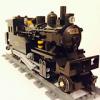
Most efficient/creative use of PF components in small locos.
Srbandrews posted a topic in LEGO Train Tech
Hi all, Apologies if something like this has been done already, but I couldn't find anything quite like it. I thought it might be a good idea to start a thread to share ideas about the best ways of squeezing Power Functions into small spaces. I occasionaly come across images where I think 'oh, that's a good way of fitting that in' but usually I've stumbled across it by chance and the reference is never there when I need it. So if you have any images of your own MOCs, or somebody elses (try to give credit of course), share them here. As a start, I found this video by a youtube user names Zanthera quite useful in the past, but tenders can make things a lot easier for steam loco builders: Anyone know of any really clever tank engines or small shunters? -
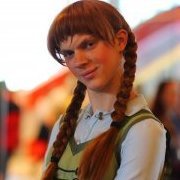
new power funtions parts
9v system posted a topic in LEGO Technic, Mindstorms, Model Team and Scale Modeling
hi guys what new pf parts do you want to see in the future as im interested to know what you think will be made next.




